A Global Examination of Population and Fertility Discourse
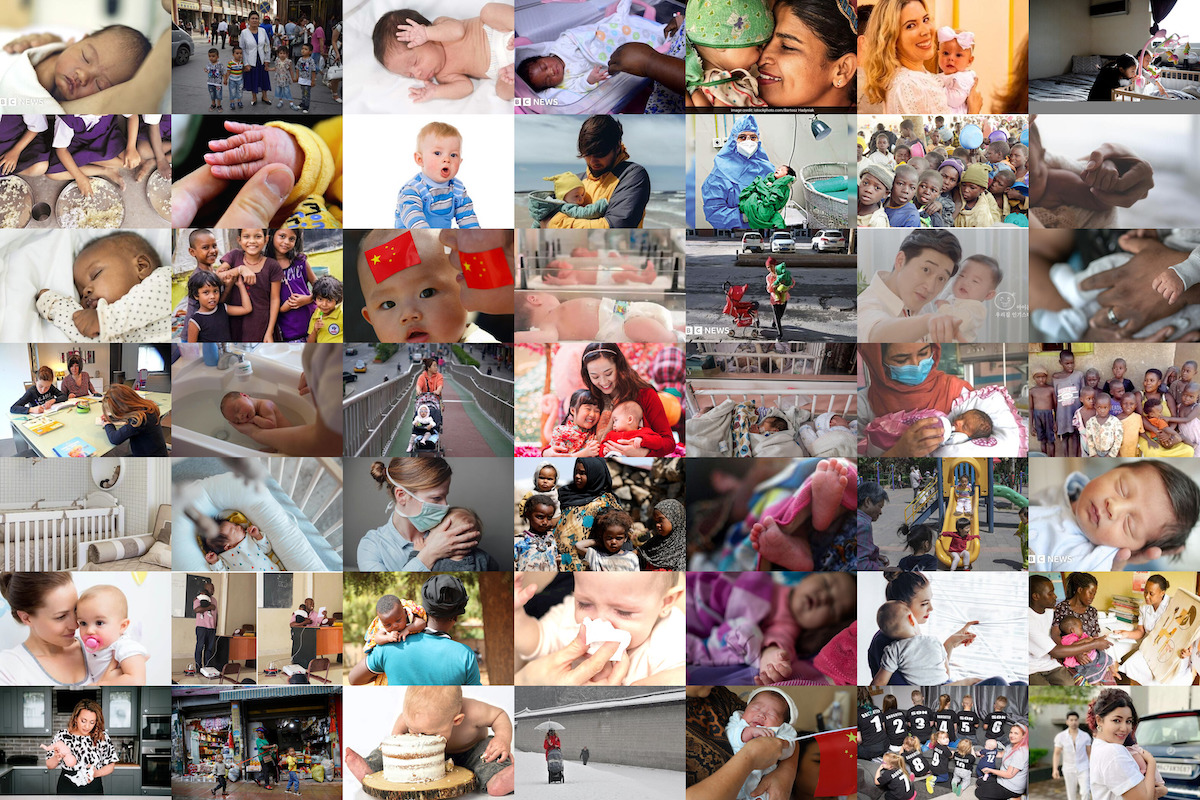
Abstract
The Brown Institute, in partnership with the United Nations Population Fund, is excited to announce a research endeavor investigating and visualizing the patterns and trends of media coverage on population and fertility across eight countries — including the United States, Brazil, France, Hungary, Japan, Nigeria, India, and Egypt. These were countries identified by the UNFPA for a public perception survey conducted for their 2023 Annual Report. Drawing on high-circulation news organizations as sources, specifically those identified in the Reuters Digital News Report, this study examines nearly 8 million news stories from 2020 through 2022. At its core, it looks to uncover the prevalence of population and fertility discussions within the larger media discourse in the different countries. Specifically, when discussing population or fertility rates, what is the framing and tone of coverage? For example, the study examines the co-occurrence of population and economic concerns, fertility and health and education access, and population and migration, analyzed across countries. It also seeks to explore the article’s sentiment, highlighting what media coverage looks like at a country level. Through advanced data analysis and visualization techniques, the findings of this project will shed light on the patterns and dynamics of media coverage of population-related issues across diverse cultural and geographic contexts, providing valuable insights into how these issues are framed and discussed in the public sphere. Ultimately, this research will contribute to a more nuanced understanding of the intersections between media and public perception on topics of population and fertility.
Background As the world population surpasses 8 billion, it is crucial to understand how fertility and population are reported on both at the local and global level. Commissioned by the United Nations Population Fund (UNFPA), this research delves into the media’s portrayal of population growth and its implications. When launching this work, the focus was on news coverage surrounding November 15, 2022, the date on which the world population reached this historic milestone. Through our initial analysis, we recognize the significance of taking a more longitudinal approach to studying reporting patterns, which will enable us to contextualize this event within larger trends and explore other important factors shaping the conversation around population growth. In this report, we present our findings on the representation of fertility and population in the media, as well as provide insights that might be used to improve discourse and create more informed dialogue around these critical issues.
To investigate how perceptions of fertility and population were reported in the media, we analyzed a vast dataset of news articles sourced from GDELT, an online news database. The GDELT Project, supported by Google Jigsaw, monitors the world’s news media in print, broadcast, and web formats, in over 100 languages, and collects and publishes content on a 15-minute cadence. Our research drew on a survey of 7.91 million unique articles published between January 1, 2020 and December 31, 2022, encompassing total coverage from 63 of the highest-reach news outlets, including both online and print platforms. The countries we focused on were the United States, Brazil, France, Hungary, Japan, Nigeria, India, and Egypt. For each of these countries, we selected a combination of the top 5 online outlets and the top 5 TV, radio, and print outlets, with the exception of Egypt, which required additional consultation with a media researcher. News organizations topping the Digital News Report lists in multiple countries like CNN and Yahoo as well as shared domain prefixes such as Globo account for the discrepancy and final count of organizations being analyzed.
In total, 405,801 unique articles related to the themes of population and fertility were identified using extensive keyword match techniques performed by the GDELT service, which translated article text into English for analysis. In order to ensure that our analysis focused on the most relevant and accurate news stories, we employed a sampling process to identify topics most closely related to our themes. Specifically, we analyzed an initial set of 10 related topics and identified a subset of four with a relevancy rate of 95% or greater across a 200-article sample. In addition to theme identification, GDELT assigns emotional dimensions to each article, identified on the original language text. For the purpose of our analysis, we made use of tone and polarity measures described later in the report.
The impact of the Covid-19 pandemic on the counts of news stories related to population and fertility is striking. When looking across samples of headlines, high levels of pandemic-related reporting made explicit reference to the national or global population, the impacts of the virus and vaccine on maternal and child health, the impact on death rates, and a collapse in fertility rates in countries around the world. Trends in relevant reporting, shown below, help expose the relationship between the Covid-19 pandemic coverage and our theme. Given the overwhelming amount of coverage devoted to the pandemic, we also analyzed a subset of population coverage that excludes explicit reference of Covid-19 or the pandemic. This subset amounts to 16,197 unique articles.
We conducted a range of analyses on our datasets. Our research encompassed a country-by-country analysis of relevant articles, an exploration of the frequency in which external countries were referenced in articles pertaining to population and fertility, an examination of various subthemes covered when reporting on the overarching theme, and a series of case studies. By examining a diverse subset of analysis, the research provides a detailed understanding of how the media has approached and framed discussions surrounding population growth and fertility, both globally and within specific countries and contexts.
Coverage and Relevance
Relevant coverage to the theme of population and fertility largely followed patterns of coverage relating to the Covid-19 pandemic. The focus of this research was on media coverage on the topics of population and fertility. It is well reported that the pandemic had and continues to have a dramatic impact on populations around the world, ranging from regressions in life expectancy to continued and dramatic drops in fertility rates in many countries. While pandemic coverage directly references national and global populations and required national and global public health interventions, much of the analysis here will focus on a subset of population coverage that excludes references to Covid-19. The chart below visualizes the dramatic impact of Covid-19/pandemic coverage on the discourse surrounding population and fertility.
In the early months of 2020, coverage relating to the theme was low and stable but saw a marked uptick at the start of the Covid-19 lockdowns, happening in January 2020 in Wuhan and in mid-March in the countries included in this study. As infections and deaths compounded worldwide, so too did news coverage related to population. In addition to these indicators, vaccine development and rollout was also a significant driver of coverage. When looking at country-specific trends, we observed spikes in coverage occurring alongside spikes in new infections. For example, coverage in Brazil followed surges in infections within the country. Another example can be seen when analyzing India and its vaccine rollout and surges in new infections due to the Delta and Omicron variants. Relevant population and fertility coverage, as well as new the Covid-19 pandemic infections in India, can be seen in the two charts below.
These findings underscore the significant impact the global pandemic had on media related to population and demographic-related, and how difficult it is to parse the two. It also highlights how non-Covid-19 pandemic coverage related to more niche reporting on fertility or country-based population measures was overshadowed during this time.
In peeling away the weighty veil of Covid-related coverage, examination of the media landscapes in eight disparate countries reveals intriguing insights into the frequency and content of reporting on population and fertility. It is worth noting that this analysis may not fully capture the intensity and scope of discourse in Hungary and Japan, due to linguistic idiosyncrasies and challenges in translating terms related to population and fertility. Consequently, these countries will feature less prominently in our exploration.
The charts above provide the opportunity to investigate spikes and lulls in coverage. Take, for example, the upswells of coverage in Egypt during March 2022, which bore witness to a crescendo of reportage on the government’s efforts to buttress women’s health and empowerment. Across the ocean, the American media landscape saw its own spike in June 2022—the reverberations of which were felt nationwide—as the headlines were dominated by discussions surrounding the landmark reversal of Roe v. Wade. These trends, tonal modulations within this coverage, and select articles can be found in the remainder of the report.
Visual Analysis
Introduction
Our research now shifts to the examination of images embedded within the article dataset. In this section, we dissect country-level visual motifs in the coverage of population and fertility topics. Our primary interest is the main header image associated with each article, as identfied by GDELT. Any images that do not meet the minimum size criteria of 300 pixels in height or width are systematically excluded from our study.
The ratio of lead-images to articles varies by country. This is largely attributable to disparities in the reliability of image hosts, the frequency of text-only articles, and domain-specific challenges encountered during image scraping. For image retrieval rates by country, consult the appendix here. See below for image coverage by year and quarter for both the full dataset and the smaller non-Covid-19 subset.
Full Dataset
In the full dataset of roughly 320,000 images, 40% contain imagery associated with the pandemic: masks, vaccines, viruses and syringes. Within this category, masks (Figure 1) and vaccines (Figure 2) emerge as the most represented subcategories. This contrasts with the smaller non-Covid-19 dataset, where only 3.7% of images contain potential pandemic imagery.
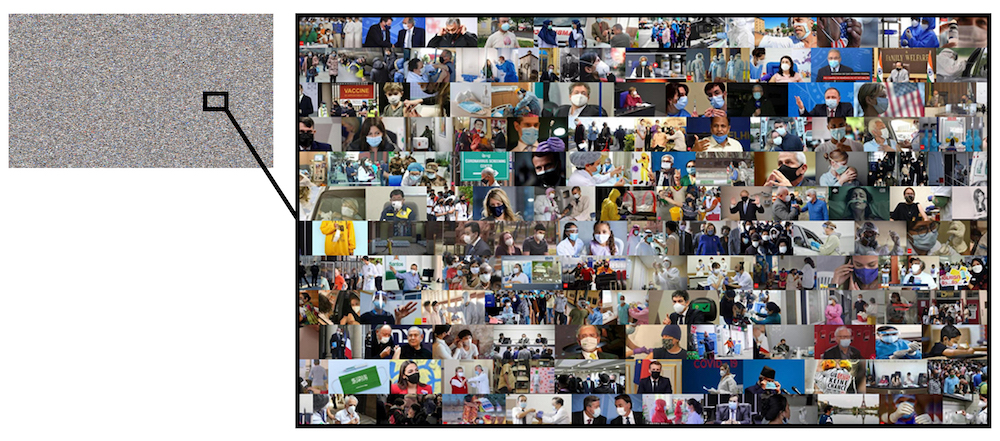
Masks are present in 11.8% of the full image dataset and 3.4% of the non-Covid-19 dataset.

The next largest image topic (18% of images) are individuals in business apparel, frequently with microphones and podiums (Figure 3). This bucket largely consists of politicians, courts, broadcast news anchors and miscellaneous public speakers or presenters.

Images of illustrations or signage (Figure 4) and images of crowds or gatherings (Figure 5) also make a noticeable presence at 8.2% and 6.4%, respectively.
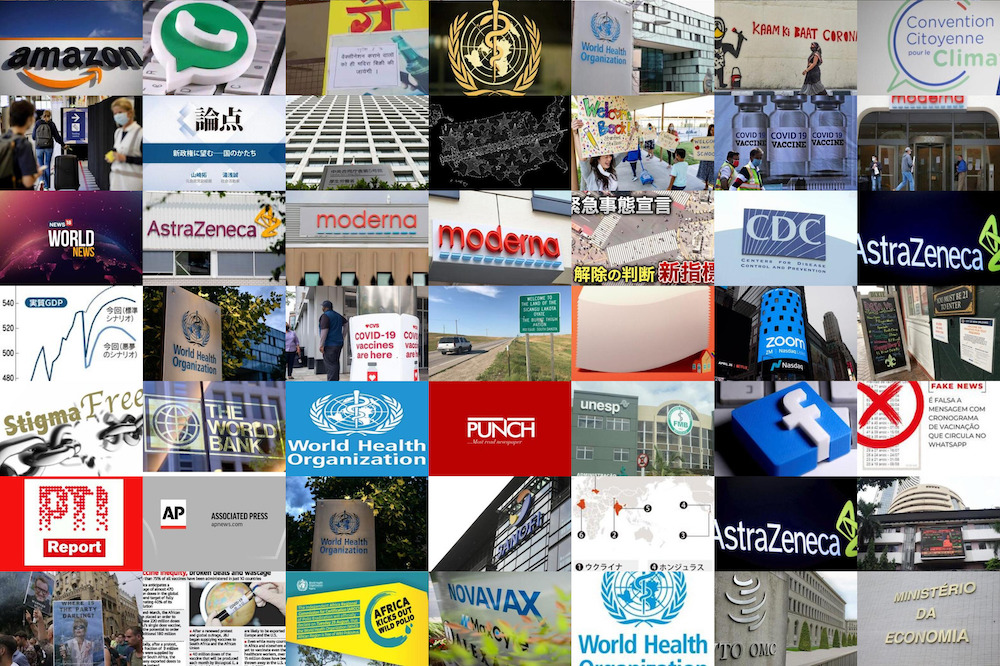

non-Covid-19 Coverage
Given the volume of Covid-19 imagery, trends can be more effectively identified by focusing on the smaller dataset that excludes pandemic coverage.
Several themes reoccur with high frequency across countries, with one of the most pronounced being images of groups of people, often outdoors. This theme ranks among the top five in every country analyzed. However, the context of these images exhibits significant variations depending on the country in question. For instance, in the United States, France, and Nigeria, there is a balanced representation of images between generalized crowd scenes and more sizeable civil protest gatherings. In the case of the United States and France, the former subset encompasses a blend of domestic and international visuals, while the latter – those depicting civil protests – predominantly showcase domestic events. This stands in contrast to Nigeria, where imagery sourced from US news features prominently in the nation’s news coverage.
Further examination of images from the United States, France and Egypt is provided in the subsequent sections. For the results of topic modeling related to the remaining five nations, refer to the appendix.
Case Study: France
People holding signs, marching (175 images)










Group of people, outdoors (124 images)





Close-up of woman (96 images)





Case Study: United States
Summary The United States imageset is dominated by Roe v. Wade and other abortion legislation coverage. Of 2459 collected images, 360 depict people with signs - largely at public demonstrations and marches. Of that subset, 45% were published in the 3 months following the controversial Supreme Court’s Roe v. Wade reversal that sparked protests across the country.
See below for sample images from the six largest topics. People holding signs (360 images)





Suit and tie, microphone (302 images)





Group of people, standing, outdoors (239 images)



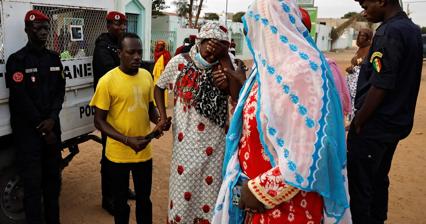

Close-up of woman (220 images)





Buildings, signage (178 images)





Split picture, two people side-by-side (168 images)





Case Study: Egypt Group of people, gathering (407 images)
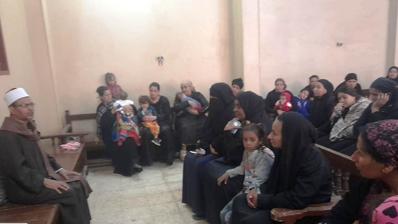
تنظيم 22 جلسة دوار للتوعية المجتمعية بأسوان |صور - بوابة الأهرام
Organizing 22 roundabout sessions for community awareness in Aswan
A group of people sitting in a room
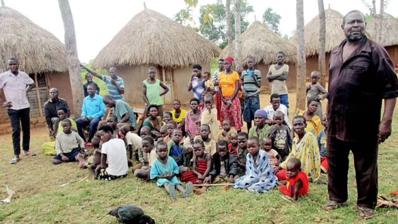
بسبب غلاء المعيشة.. «موسى» يبدأ تحديد النسل بعد إنجاب 102 طفلا من 12 زوجة - المصري لايت
Because of the high cost of living... "Moses" begins birth control after giving birth to 102 children from 12 wives
A group of people sitting and standing in a field

القليوبية تواجه الزيادة السكانية في القرى بمبادرات لخلق فرص عمل
Qalyubia is addressing population increase in the villages with initiatives to create job opportunities
A group of people gathered around a van

Egypt spends over EGP 100 mln annually on free family planning methods - Health - Egypt
A group of people on a subway train
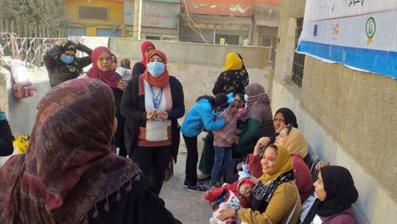
استمرار الحملة التنشيطية لتنظيم الأسرة بعنوان حقك تنظمي بأسوان - المحافظات
The stimulus campaign for family planning, entitled Your Right to Organize, will continue in Aswan
A group of people sitting on the side of the street
Man wearing suit and tie (299 images)

ننشر نص كلمة رئيس الوزراء أمام الندوة التثقيفية للقوات المسلحة
We publish the text of the prime minister's speech before the educational symposium of the armed forces
A man sitting at a desk in front of a microphone

أستاذ جغرافيا بشرية: متوسط الإنجاب يصل إلى 5 أطفال لكل امرأة بـ"غزة"
Human geography professor: The average birth rate is 5 children per woman in "Gaza"
A person wearing a suit and tie

حملة تنشيطية لتنظيم الأسرة والصحة الإنجابية بالقاهرة - بوابة الأهرام
A promotional campaign for family planning and reproductive health in Cairo
A man sitting at a desk wearing a suit

"مجاهد": "100 مليون صحة" تستهدف 28 مليون سيدة على مستوى الجمهورية
"Mujahid": "100 Million Health" targets 28 million women nationwide
A person wearing a suit and tie

«الأوقاف»: دورات متخصصة في التوعية بالقضية السكانية للأئمة والواعظات
“Awqaf”: specialized courses in raising awareness of the population issue for imams and female preachers
A man sitting in front of a microphone in a room
Flags, arabic writing (141 images)

WHO supplies reach Tigray but fuel shortage stops delivery - Africa - World
A truck driving down a street with a flag on the back of it

«2 بس عشان ياخدوا حقهم».. الإفتاء توضح حكم عزل الزوج عن زوجته خشية الإنجاب
“Just to get their rights” The fatwa clarifies the ruling on isolating a husband from his wife for fear of having children
A building with arabic writing on it

معلومات الوزراء يستعرض مستقبل شكل الغذاء بالعالم في ظل الأزمات الحالية - بوابة الأهرام
Information Ministers reviews the future of food in the world in light of the current crises
The egyptian flag is shown on a purple background

الأمم المتحدة: زواج الأطفال يزيد في الأزمات.. وقضايا العرب قابلة للحل
The United Nations: Child marriage increases in crises... Arab issues can be resolved
A bunch of flags are flying in the air

القومي للمرأة يطلق برنامج "جلسات الدوار" لتوعية 10 ملايين مواطن بقضايا تنمية الأسرة - بوابة الأهرام
The National Council for Women launches program to educate 10 million citizens about family development issues
A building that has arabic writing on it
Woman wearing head scarf (140 images)

خبير اقتصادي: تجربة الإصلاح ثرية.. ويجب ألا نبالغ في توقعاتنا - مصر
Economist: The experience of reform is rich... and we must not exaggerate our expectations - Egypt
A woman wearing a head scarf talking to someone

القباج تستعرض دور الجمعيات الأهلية في مبادرة حياة كريمة |فيديو - بوابة الأهرام
Al-Qabbaj reviews the role of NGOs in the Decent Life Initiative | Video
A woman wearing a hijab is posing for a picture
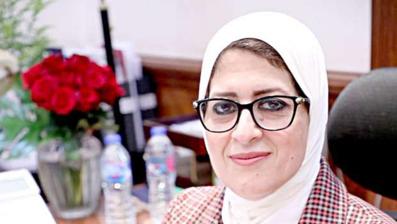
فحص 4.5 مليون سيدة في مبادرة الرئيس لدعم صحة المرأة
Screening 4.5 million women in the President's Initiative to Support Women's Health
A woman wearing glasses and a head scarf

الصحة: فحص 4.7 مليون سيدة بمبادرة الرئيس لدعم صحة المرأة
Health: 4.7 million women were screened under the President's initiative to support women's health
A woman wearing a head scarf sitting at a desk

زايد: زيادة السكان 2 مليون نسمة تكلف الدولة 54 مليار جنيه في قطاع الصحة
Zayed: Increasing the population by 2 million people will cost the state 54 billion pounds in the health sector
A woman wearing a hijab is giving a speech
Buildings (91 images)

إعدام طن ونصف أغذية فاسدة وغلق منشأتين غير مرخصتين بالشرقية
Destroying a ton and a half of spoiled food and closing two unlicensed facilities in Sharkia
A car parked on the side of the road near a building

دراسة: الدولة بذلت جهودًا كبيرة لتنظيم وتنمية الأسرة.. لكن الأهداف المأمولة لم تتحقق بعد - بوابة الأهرام
Study: The state has made great efforts to organize and develop the family... but the hoped-for goals have not yet been achieved
A building that has a lot of writing on it

الأوقاف»: تنظيم النس«ل من وفاء بر الوالدين للأبناء
“Awqaf”: Birth control is the loyalty of parents to children
A building that has a very large arch on the top

Early breast cancer detection up 70% since start of presidential health initiative: Ministry - Health - Egypt
A building that has a sign on the side of the building

تعرف على أسماء وتخصصات مستشفيات التأمين الصحي ببورسعيد
Learn about the names and specializations of health insurance hospitals in Port Said
a tall building with a truck parked in front of it
Subtheme Analysis
In linking this investigation with the UNFPA public opinion survey, co-occurrence analysis of subthemes related to population and fertility within the extensive dataset of news articles is critical. Specifically, we examined the frequency of seven distinct subthemes: food, the economy, conflict, the environment, education, and migration. These subthemes were selected in alignment with the YouGov public perception survey conducted by the UNFPA, which aimed to identify areas of hope and concern in the context of population and fertility.
The analysis revealed several key takeaways regarding the co-occurrence of subthemes related to population and fertility within news coverage. Perhaps unsurprisingly, the most commonly referenced subtheme across all countries and regions was the economy. Notably, Japan and Nigeria had an even higher percentage of stories referencing the economy, at 73% and 71%, respectively, suggesting that discussions of population and fertility are often framed within economic contexts in these countries.
In addition to the economy, we found that the environment was also a common subtheme, and in United States, Nigeria, and Egypt, it was the most prevalent at 64%, 66%, and 67%. These suggest that concerns around environmental sustainability in the context of population are substantial within these countries.
We also spent significant time exploring the occurrence of subthemes across our two corpora of data: the 16k news stories related to population and fertility and the 7.91M news stories representing all coverage. Across all subthemes, there was a notable increase in the prevalence in stories relating to the theme of population and fertility. For instance, we observed substantially higher levels of education-related content in population and fertility coverage than in all coverage (23% and 29%, respectively). For a few countries, such as Hungary and Egypt, there was only a slight increase in co-occurrence between migration and population coverage (3% and 5%). For other countries, this increase was more pronounced, on top of an already high prevalence of co-occurrence.
Despite being a less common subtheme, it is significant that the topic of migration appeared in so many population stories. Subthemes like the economy and environment are identified in a high number of stories because those subthemes are broad in nature. Migration, on the other hand, is more targeted. In both the United States and Nigeria, the subtheme of migration appeared in 38% and 33% of stories, respectively.
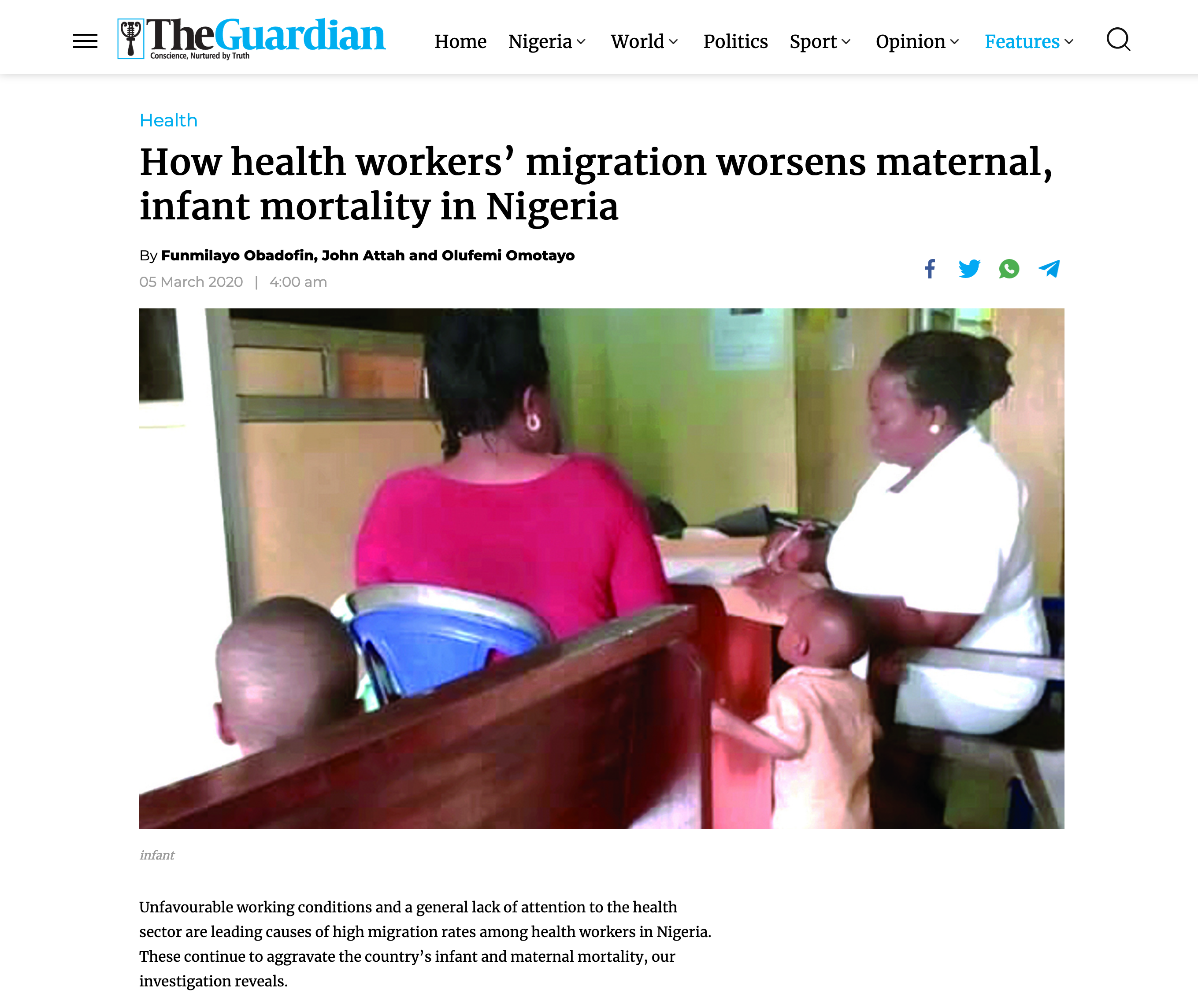
Nigeria, with its large population, dynamic economic climate, and permeable borders, remains caught in the currents of significant internal and external migration. As such, it is not surprising to see migration as a core theme of the stories within the dataset.
Sample coverage
Regulate migration of nurses, midwives to reduce brain drain, NANNM tells FG Forced Migration, Critical Unemployment’: 10 Things World Bank’s Latest Report Revealed About Nigeria Rape, abuse and violence: Female migrants’ journey to Libya
By contrast to Nigeria, a country which tends to report on migration away from its borders, the United States is generally reporting on an inflow to the country. As the global perspective on migration shifts, recent headlines highlight the challenges and perils of migrants in the United States. Coverage in the US also focused heavily on migration abroad. In US coverage on population and fertility, there were references to the treatment of migrants seeking passage to Europe in Libya, coverage of Ethiopian women seeking employment in Saudi Arabia, and high counts of coverage documenting The Biden administration’s immigration policies. Amidst these political actions, there was also coverage of community stories, including reports on towns notorious for xenophobia embracing immigrants.
Sample coverage
Biden administration looks to protect abortion rights of migrant minors following Dobbs ruling How a Town Famous for Xenophobia Fell in Love With Immigrants The ACLU and others urge border authorities to limit detention of pregnant migrants
Country Analysis
In examining the extent of population and fertility within media coverage, it is not only essential to delve into the subthemes shaping the dialogue, but also to recognize whose voices and experiences are being spotlighted in these media ecosystems. These narratives, whether centered on migration or other pressing issues, inevitably reflect the geopolitical landscape and hold powerful influence over our collective understanding of population dynamics. To offer a comprehensive and insightful lens, our analysis investigates the countries most prominently referenced within news articles, shedding light on which nations are at the forefront of this conversation, and contextualizing their roles in the broader discourse on population and fertility.
Below are the countries most referenced in news stories from population and fertility coverage within the eight countries in the survey.
| US | Nigeria | Brazil | Egypt |
|---|---|---|---|
|
|
|
|
|
|
|
|
|
|
|
|
|
|
|
|
|
|
|
|
|
|
|
|
|
|
|
|
|
|
|
|
|
|
|
|
|
|
|
|
|
|
|
|
|
|
|
|
|
|
| France | Hungary | India | Japan |
|---|---|---|---|
|
|
|
|
|
|
|
|
|
|
|
|
|
|
|
|
|
|
|
|
|
|
|
|
|
|
|
|
|
|
|
|
|
|
|
|
|
|
|
|
|
|
|
|
|
|
|
|
|
|
In this table is a mix of neighboring countries, countries involved in a major global incident, and an over-indexing of G7 nations. If we map coverage across all eight countries and remove the G7 as well as host countries from the data, a more nuanced picture emerges.
Across non-G7 countries, India, Egypt, Nigeria, China, and Brazil were most referenced in population coverage. Removing the countries focused on in this report place China (1153 mentions), Pakistan (297 mentions), Australia (271), Ukraine (240) and Spain (207) as the top 5 non-G7 countries discussed.
What is more interesting; however, are the countries that are covered when discussing the subthemes included in this analysis. Below is a table that highlights the top countries referenced for the subthemes migration, conflict, and education. Take for example, the Russian invasion of Ukraine beginning on February 24, 2022. This event alone has put Ukraine atop conversations of migration and conflict, aside from China. Similarly, devastating floods and internal strife in Pakistan has generated large amounts of coverage referencing the country.
| Migration | Conflict | Education |
|---|---|---|
|
|
|
|
|
|
|
|
|
|
|
|
|
|
|
|
|
|
|
|
Tonal Analysis
Complementary to subtheme and geographic analysis, we evaluated the mean tone of articles as seen at a country, theme, and subtheme level. The tone metric is represented as the average sentiment of the document as a whole, ranging from -100 (extremely negative) to +100 (extremely positive), with common values falling between -10 and +10, with 0 indicating neutrality. It is important to note that documents with a tone score close to zero may have a low emotional response or roughly equivalent positive and negative scores, nullifying one another.
Exploration of population coverage in France
In the tone chart above, two countries provided appreciably more negative press, both in general and in reference to population: France and the United States. In French media, and in coverage specific to the theme, the topics of conflict and migration were particularly negative. This is a trend identified beyond just France. For reference, the average tone of population-related coverage by country and topic can be found below.
| conflict | economy | migration | education | environment | ||
| NI | -1.7990735 | -1.1332536 | -2.2608823 | -1.0376608 | -1.2596234 | |
| US | -2.822855 | -2.3000054 | -2.8493226 | -2.2860256 | -2.2741657 | |
| FR | -2.9578916 | -2.0542673 | -3.0600696 | -2.0297274 | -2.1439938 | |
| HU | -2.0732955 | -1.1078809 | -2.119082 | -1.4550891 | -1.5682669 | |
| EG | 0.15816758 | 0.90361382 | 0.02057857 | 1.22124754 | 0.90218745 | |
| BR | -1.9503599 | -0.8451556 | -2.0838541 | -1.1506355 | -1.2478798 | |
| IN | -2.1252266 | -1.2312542 | -2.2023146 | -1.1579901 | -1.4524689 | |
| JA | -1.7795536 | -0.8120797 | -1.4608367 | -0.8396908 | -0.6703812 |
Sample coverage
Loi immigration : le gouvernement veut créer une carte de séjour pour les professionnels de santé Économie, sécurité, immigration… Le programme des 5 candidats à l’investiture LR L’Espagne aura besoin de ‘millions et de millions de migrants’ dans les prochaines années, estime un ministre espagnol
Amidst the multifaceted landscape of French headlines, several pressing issues emerge as focal points for the nation’s public discourse. Highlights from these stories often encompass business developments, job growth, and challenges within healthcare systems, all against a backdrop of global concerns. From Poland to the United States, impassioned debates surrounding women’s reproductive choices and access to healthcare services echo beyond France’s borders, revealing an international dialogue that continues to hold sway.
The age of COVID-19 has sparked a healthcare crisis wherein the roles and accessibility of midwives have taken center stage. Concurrently, discussions on gender identity and feminism reflect a divided discourse that resonates throughout nations worldwide. As a recurring theme, immigration and aging populations make their presence known in a range of stories, emphasizing their ever-growing importance on both national and global scales.
Exploration of population coverage in Egypt
Analyzing coverage en masse helps to highlight the variation in tone across news organizations and countries. To showcase this variation across countries, we calculated the mean tone of all articles related to the theme excluding Covid-19 and pandemic coverage (16.2K articles), and compared it to the mean tone of all articles (7.91M articles). The differences between the two are stark.
In particular, in Egypt, Nigeria, and Hungary, there exists significantly more positive coverage in articles relating to population. In fact, Egyptian coverage of population and fertility is the only subset of data analyzed that demonstrated a positive average tone. It should be noted that of the countries explored in this report, Egypt is unequivocally the media landscape most dominated by an assortment of state-run entities. Using the surge in coverage from February and March 2022, there are key themes emerging from the coverage.

A key theme highlighted in this coverage were details of initiatives in motion to curb the nation’s population growth. They encompass endeavors in family planning campaigns, the championing of birth control, and the espousal of incentives for smaller families, tracing a conscious effort to rein in the headlong sprint of population growth. A portion of these headlines highlights initiatives zeroing in on the betterment of women’s bodily health, encompassing services such as cancer screenings and the bolstering of reproductive health provisions. Furthermore, the media heralds concerted actions to empower Egypt’s women by fostering educational opportunities and nurturing their political representation.
Sample coverage
وزيرة التخطيط تكشف محاور خطة تنمية الأسرة المصرية - بوابة الأهرام
Amidst the tide of reporting, mentions of government-led developments for citizen welfare recurrently emerge. These pillars of commitment manifest as cash assistance levies, rural development projects, and programs dedicated to fostering “a dignified life” for the Egyptian populace. An undercurrent within the media’s reporting is an emphasis on various public awareness campaigns. These concentrated efforts shed light on fraught topics like population growth, family planning, illegal migration, climate change, and an array of healthcare services.
Sample coverage
المجلس القومى للمرأة ينظم 6 جلسات توعية استهدفت 310 سيدات في قرى أسوان القاهرة : حملة للتوعية بتنظيم الأسرة لمدة ١٢ يومًا في عدد من الأحياء
And finally, a selection of headlines feature partnerships forged between global bodies such as the United Nations Population Fund and local governing authorities. The stories emphasize collaborative endeavors to address formidable challenges, including those posed by burgeoning population growth, climate change, and the pressing need for robust healthcare services.
Sample coverage وزير الصحة اليمني وممثل صندوق الأمم المتحدة للسكان يبحثان تدخلات الصندوق في القطاع الصحي مايا مرسي: «تنمية الأسرة» يستهدف ضبط النمو السكاني وتوفير حافز للمرأة
Conclusion As the world population surpasses 8 billion, this study sheds light on the multifaceted media portrayal of population growth and fertility. The analysis of nearly eight million articles spanning 2020-2022 demonstrated, first and foremost, the significant influence of the Covid-19 pandemic on media coverage, reflecting the interconnectedness of global health and demographic issues, especially in countries like Brazil and India. In coverage specific to population and fertility, the prominence of the economy as a recurring subtheme, differing country-specific trends, and a complex geopolitical landscape underline the interplay of cultural, political, and economic factors.
In addition, the research highlights the variation in tone across countries, revealing both positive and negative sentiment, and underscores the need to perceive demographic changes as deeply intertwined with broader societal and global contexts. Insights into localized concerns, the role of non-G7 nations, and the impact of significant global challenges contribute to an enriched understanding of population and fertility trends.
And lastly, this study highlights the incredible complexity of analyzing media from various countries and information economies and the need for a more nuanced view at a country and journalistic institutional level. Our hope is that this work is a starting point for a larger conversation about how media portray the topics of population and fertility.
